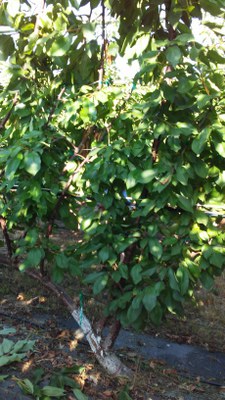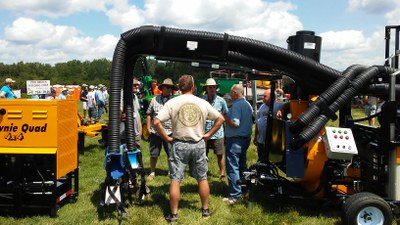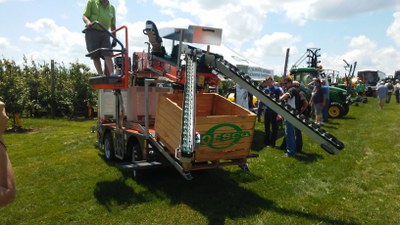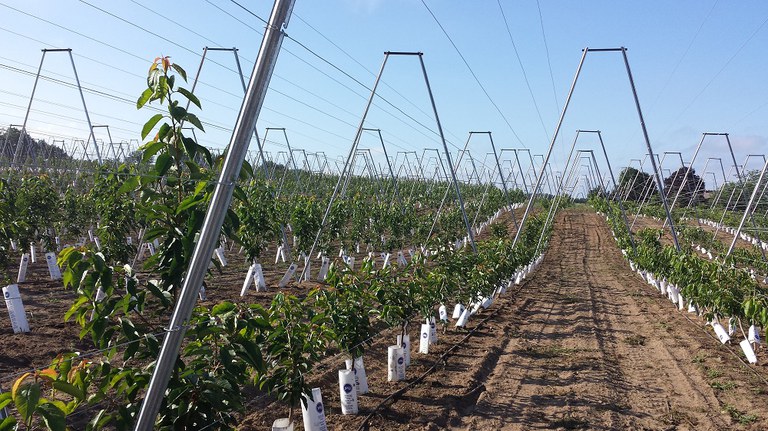A group of young growers traveled with the Penn State Extension Young Grower Alliance to Grand Rapids, Michigan for the 2017 IFTA Study Tour, themed “Tree Fruit Excellence – Innovation and Success.” The group spent three days visiting innovative orchards throughout Southwest Michigan, as well as the Michigan State University research orchards and labs.
The tour showcased many experimental tree training practices and technologies. The whole of River Ridge Orchard (pictured right) has been planted on a metal V-trellis. Most blocks are planted with a density of 1800 trees/acre, with a double row training system.
Other orchards showed off their own interesting training systems, such as triple-leader (left) or multi-leader apples (center). At the MSU research orchard, a sweet cherry training trial compared upright fruiting offshoot (UFO; right), Kym Green Bush, tall spindle, and super spindle training systems across different sized rootstocks. Follow the link to find more information on the cherry trial.



The tour also showcased some of the latest in orchard machinery. Two platforms with harvest assist systems were marketed on the tour. A vacuum-assist bin filler (below) using technology tested by Penn State University is being marketed by Phil Brown Welding. The vacuum tube system is used to move fruit directly from platform to the bin without any fruit-on-fruit contact to maximize harvest labor efficiency and minimize harvest-time fruit degradation.

A second harvest assist platform marketed by Oesco Inc. (below) tries to achieve the same effects by using a conveyer to transport fruit from pickers to bins.

A pervasive theme of the tour was "preparing for automation." Across the many orchard visits, growers repeatedly stressed the need to consider new and upcoming technologies when planning new plantings. In particular, several orchards mentioned that they did not want to push plantings closer than 12 ft to ensure there would be enough room to fit orchard platforms and automated harvesters between the rows. Other than the more experimental tree training practices on display, tall spindle and hedgerow systems were emphasized due to the expectation that these systems will integrate more easily with new technologies. Finally, another grower orchard emphasized the importance of striving for large uniform orchard blocks, which they said enabled them to track profits by block and acre.
To learn more about the Young Grower Alliance, contact Don Seifrit, dus970@psu.edu.
Contact us

Social Media
Contact us



